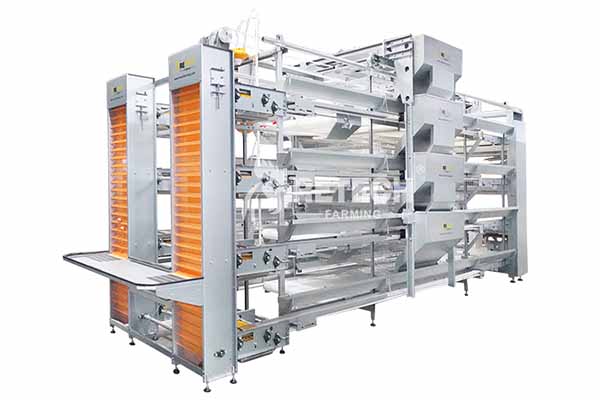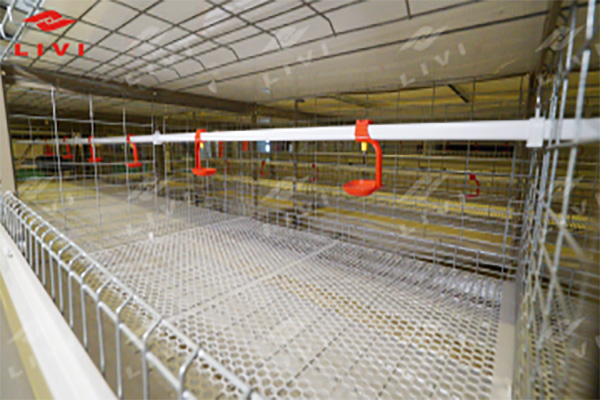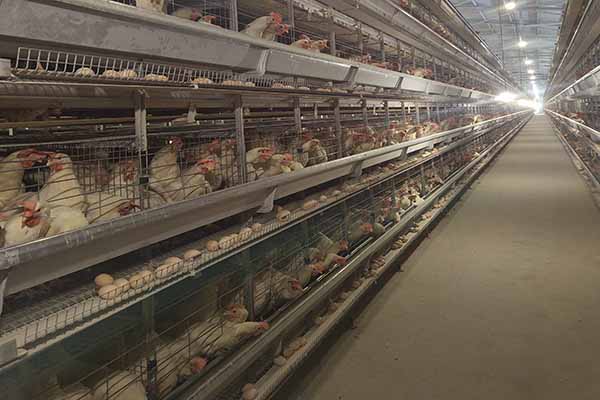Installation Schedule for Uganda Chicken Farm Equipment
Time : 2025-06-28
Installing chicken farm equipment in Uganda requires a well-thought-out schedule to ensure efficient operation and minimal disruption. This article provides a comprehensive guide to the installation schedule for chicken farm equipment in Uganda, focusing on key stages and considerations for a successful setup.

1. Pre-Installation Planning
Before the actual installation begins, it is crucial to have a thorough pre-installation plan. This involves several key steps:
- Site Evaluation: Assess the location of the chicken farm to ensure it meets the necessary requirements for a chicken farm, such as proper ventilation, water supply, and proximity to feed suppliers.
- Equipment Selection: Choose the appropriate chicken farm equipment based on the farm’s size, production goals, and specific needs. This includes feeders, waterers, nesting boxes, lighting systems, and ventilation systems.
- Team Selection: Assemble a team of skilled professionals who have experience in installing chicken farm equipment. This team should include electricians, plumbers, and technicians familiar with poultry farming equipment.
- Regulatory Compliance: Ensure that the equipment and installation process comply with local regulations and standards in Uganda.
2. Arrival of Equipment
The first step in the installation process is the arrival of the chicken farm equipment. This should be scheduled based on the delivery date provided by the manufacturer or supplier. Key considerations include:
- Transportation: Arrange for secure transportation to the farm, considering the weight and dimensions of the equipment.
- Storage: Designate a secure storage area for the equipment to prevent damage during the installation process.
- Quality Check: Conduct a thorough quality check of the equipment upon arrival to ensure that it meets the required specifications and is in good working condition.
3. On-Site Preparation
Once the equipment has arrived and been checked, the following steps should be taken to prepare the site for installation:
- Foundation Preparation: Ensure that the foundation for the equipment is properly prepared, including concrete slabs for feeders, waterers, and nesting boxes.
- Power and Water Connections: Install electrical and plumbing connections according to the manufacturer’s specifications and local regulations.
- Groundwork: Clear the site of any debris or obstacles that could hinder the installation process.
4. Installation Process
The actual installation process should be carried out in a systematic manner to ensure everything is properly set up. Here is a general schedule for the installation process:
- Day 1: Unpack the equipment and conduct a final quality check.
- Day 2-3: Set up feeders, waterers, and nesting boxes. Ensure that the equipment is aligned correctly and that all connections are secure.
- Day 4-5: Install lighting and ventilation systems. Ensure that the lighting is sufficient for the chickens’ health and productivity, and that the ventilation is effective in maintaining a comfortable environment.
- Day 6-7: Conduct a pre-commissioning check to ensure that all equipment is functioning correctly. This includes testing feeders, waterers, and any automated systems.
5. Commissioning and Training
After the installation is complete, the next step is to commission the equipment and provide training to the farm staff. This includes:
- Equipment Commissioning: Ensure that all systems are operating correctly and make any necessary adjustments.
- Staff Training: Train the farm staff on how to operate and maintain the equipment. This should include routine maintenance procedures, troubleshooting, and best practices for chicken care.
6. Post-Installation Support
Post- installation support is crucial for the long-term success of the chicken farm. This includes:
installation support is crucial for the long-term success of the chicken farm. This includes:
- Regular Maintenance: Establish a schedule for regular maintenance of the equipment to prevent downtime and ensure optimal performance.
- Technical Support: Provide access to technical support from the manufacturer or supplier in case any issues arise.
- Monitoring: Monitor the performance of the equipment and the health of the chickens to identify any areas for improvement.
By  following this detailed installation schedule and taking into account the specific needs of your chicken farm in Uganda, you can ensure a smooth and successful setup of your farm equipment.
following this detailed installation schedule and taking into account the specific needs of your chicken farm in Uganda, you can ensure a smooth and successful setup of your farm equipment.











